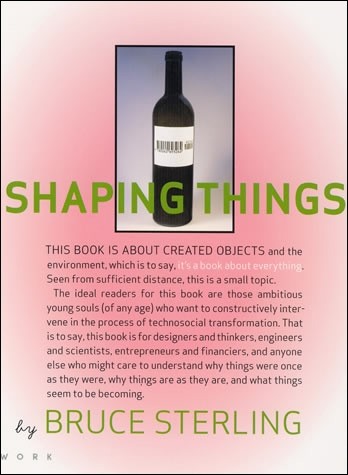Stephanie Smith, Victor Margolin (eds.): Beyond Green: Toward a Sustainable Art (2006)
Filed under catalogue | Tags: · art, design, ecology, sustainable design

Balancing environmental, ethical, economic, and aesthetic concerns, sustainable design has the potential to transform everyday life and has already dramatically reshaped the practice of architecture. “Beyond Green” introduces a new generation of international artists who work at the intersection of sustainable design and contemporary art.
The book explores the ways that this design strategy is being used-and sometimes intentionally misused-by an emerging group of artists who combine fresh aesthetic sensibilities with constructively critical approaches to the production, dissemination, and display of their art. Lavishly illustrated, the book also includes texts by and interviews with individual artists, along with substantial essays by exhibition curator Stephanie Smith and design historian Victor Margolin. What results is a bracing volume that will be of interest to practitioners and aficionados of design and art alike, as well as to environmentalists.
Publisher Independent Curators International, 2006
ISBN 0935573429, 9780935573428
More info (exhibition)
More info (google books)
PDF (updated 2011-11-3)
Comments (2)Bruce Sterling: Shaping Things (2005)
Filed under book | Tags: · design, environment, gadgets, machine, things

“‘Shaping Things is about created objects and the environment, which is to say, it’s about everything,’ writes Bruce Sterling in this addition to the Mediawork Pamphlet series. He adds, ‘Seen from sufficient distance, this is a small topic.’
Sterling offers a history of shaped things. We have moved from an age of artifacts, made by hand, through complex machines, to the current era of ‘gizmos.’ New forms of design and manufacture are appearing that lack historical precedent, he writes; but the production methods, using archaic forms of energy and materials that are finite and toxic, are not sustainable. The future will see a new kind of object—we have the primitive forms of them now in our pockets and briefcases: user-alterable, baroquely multi-featured, and programmable—that will be sustainable, enhanceable, and uniquely identifiable. Sterling coins the term ‘spime’ for them, these future manufactured objects with informational support so extensive and rich that they are regarded as material instantiations of an immaterial system. Spimes are designed on screens, fabricated by digital means, and precisely tracked through space and time. They are made of substances that can be folded back into the production stream of future spimes, challenging all of us to become involved in their production. Spimes are coming, says Sterling. We will need these objects in order to live; we won’t be able to surrender their advantages without awful consequences.”
Designed by Lorraine Wild
Publisher MIT Press, 2005
Mediaworks Pamphlets series
ISBN 026219533X, 9780262195331
149 pages
PDF (updated on 2020-4-12)
Comment (0)Jay David Bolter, Diane Gromala: Windows and Mirrors: Interaction Design, Digital Art, and the Myth of Transparency (2005)
Filed under book | Tags: · design, digital art, human-computer interaction, interaction design

In Windows and Mirrors, Jay David Bolter and Diane Gromala argue that, contrary to Donald Norman’s famous dictum, we do not always want our computers to be invisible “information appliances.” They say that a computer does not feel like a toaster or a vacuum cleaner; it feels like a medium that is now taking its place beside other media like printing, film, radio, and television. The computer as medium creates new forms and genres for artists and designers; Bolter and Gromala want to show what digital art has to offer to Web designers, education technologists, graphic artists, interface designers, HCI experts, and, for that matter, anyone interested in the cultural implications of the digital revolution.
In the early 1990s, the World Wide Web began to shift from purely verbal representation to an experience for the user in which form and content were thoroughly integrated. Designers brought their skills and sensibilities to the Web, as well as a belief that a message was communicated through interplay of words and images. Bolter and Gromala argue that invisibility or transparency is only half the story; the goal of digital design is to establish a rhythm between transparency–made possible by mastery of techniques–and reflection–as the medium itself helps us understand our experience of it.
The book examines works of digital art from the Art Gallery at SIGGRAPH. These works, and their inclusion in an important computer conference, show that digital art is relevant to technologists. In fact, digital art can be considered the purest form of experimental design; the examples in this book show that design need not deliver information and then erase itself from our consciousness but can engage us in an interactive experience of form and content.
Published by MIT Press, 2005
ISBN 026252449X, 9780262524490
182 pages

